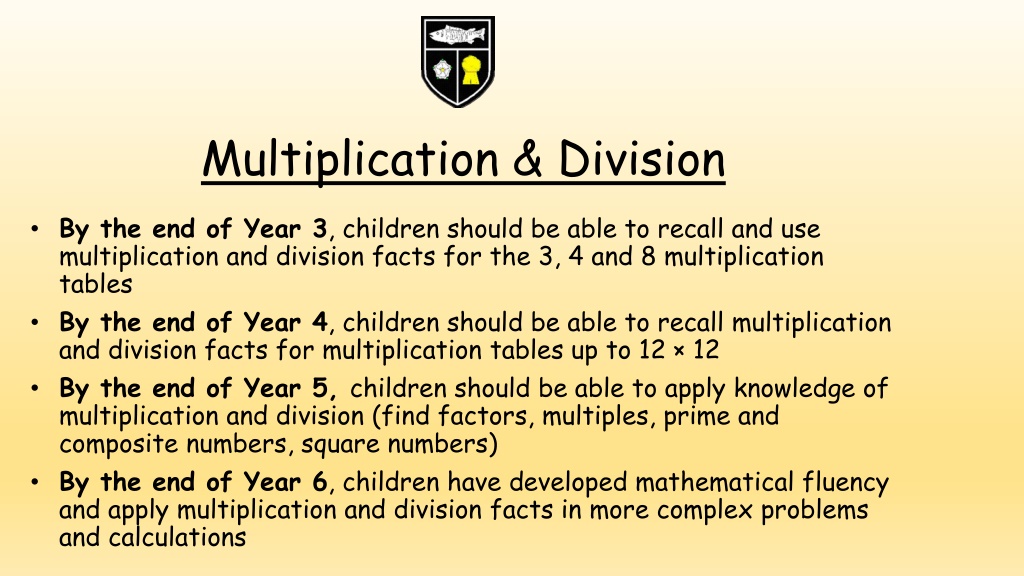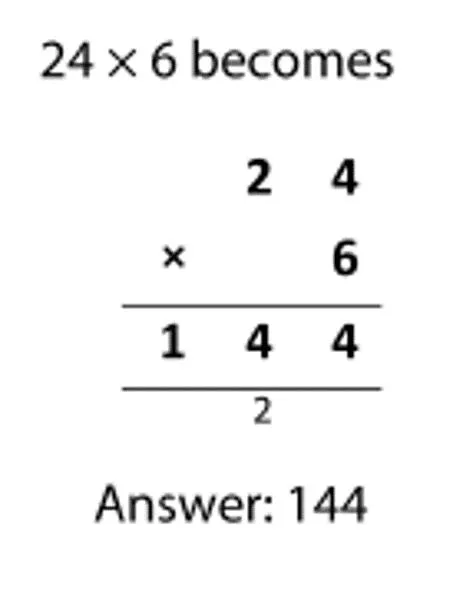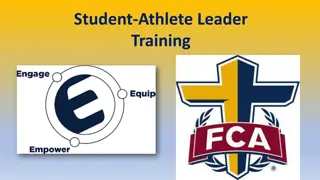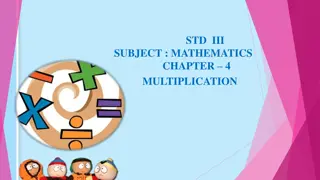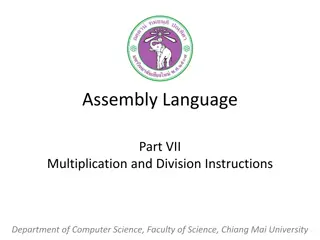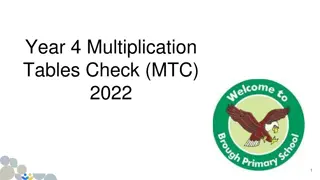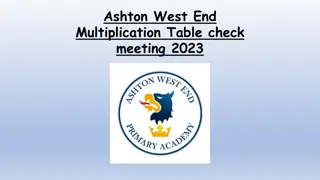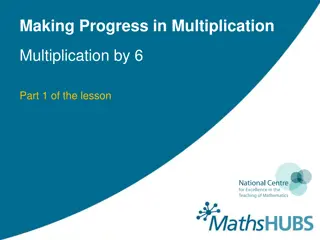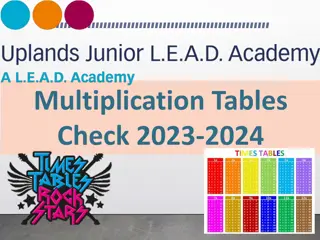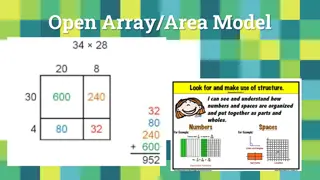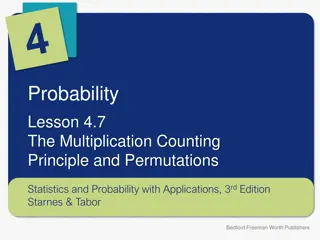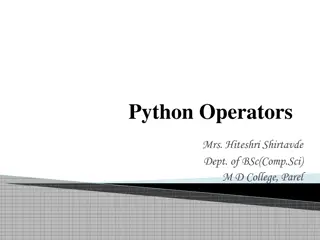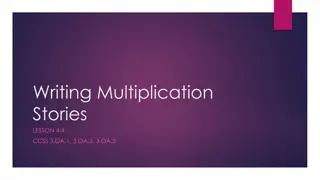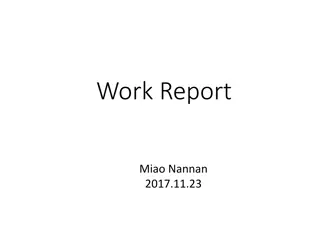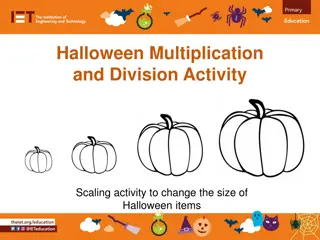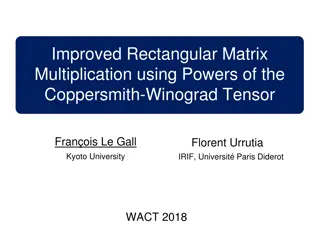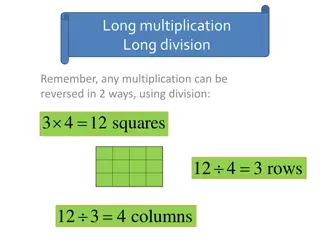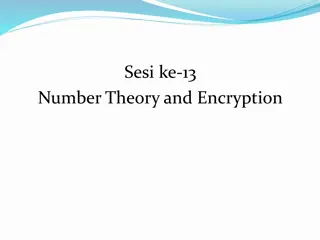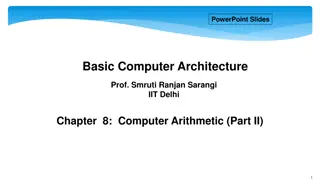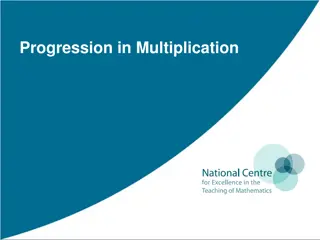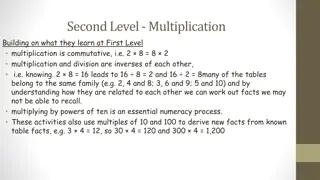Multiplication & Division
Strengthen mathematical skills by mastering multiplication & division facts from Year 3 to Year 6. Progress from basic tables to complex calculations with formal written methods. Enhance understanding of factors, multiples, prime numbers, and more. Explore columnar methods for multi-digit operations. Build fluency in applying arithmetic knowledge to solve intricate problems.
Download Presentation

Please find below an Image/Link to download the presentation.
The content on the website is provided AS IS for your information and personal use only. It may not be sold, licensed, or shared on other websites without obtaining consent from the author.If you encounter any issues during the download, it is possible that the publisher has removed the file from their server.
You are allowed to download the files provided on this website for personal or commercial use, subject to the condition that they are used lawfully. All files are the property of their respective owners.
The content on the website is provided AS IS for your information and personal use only. It may not be sold, licensed, or shared on other websites without obtaining consent from the author.
E N D
Presentation Transcript
Multiplication & Division By the end of Year 3, children should be able to recall and use multiplication and division facts for the 3, 4 and 8 multiplication tables By the end of Year 4, children should be able to recall multiplication and division facts for multiplication tables up to 12 12 By the end of Year 5, children should be able to apply knowledge of multiplication and division (find factors, multiples, prime and composite numbers, square numbers) By the end of Year 6, children have developed mathematical fluency and apply multiplication and division facts in more complex problems and calculations
Formal Written Columnar Methods Year 3: Pupils should be taught to write and calculate mathematical statements for multiplication and division using the multiplication tables that they know, including for two-digit numbers times one- digit numbers, using mental and progressing to formal written methods. 24 x 6 24 6 _____ 1 2 0 (20 x 6) 2 4 ( 4 x 6) _____ 1 4 4 Children must have a good understanding of the value of digits before moving onto short multiplication. If you know 3 x 4 = 12, what else do you know?
Formal Written Columnar Methods Year 4: Pupils should be taught multiply two-digit and three-digit numbers by a one-digit number using formal written layout.
Formal Written Columnar Methods Year 5: Pupils should be taught to multiply numbers up to 4 digits by a one- or two-digit number using a formal written method, including long multiplication for two-digit numbers.
Formal Written Columnar Methods Year 6: Pupils should be taught to multiply multi-digit numbers up to 4 digits by a two-digit whole number using the formal written method of long multiplication. Give it a go! 3478 x 14 = = 48 692
Formal division methods Year 3: Pupils should be taught to write and calculate mathematical statements for multiplication and division using the multiplication tables that they know, including for two-digit numbers times one-digit numbers, using mental and progressing to formal written methods. Focus on the facts they know, including 3, 4 and 8 times tables. Children must have a good understanding of the value of digits before moving onto more formal methods. The inverse!
Formal division methods Year 4: Pupils should be taught to recall multiplication and division facts for multiplication tables up to 12 12 Pupils practise to become fluent in the formal written method of short multiplication and short division with exact answers. The inverse!
Formal division methods Year 5: Pupils should be taught to divide numbers up to 4 digits by a one-digit number using the formal written method of short division and interpret remainders appropriately for the context Remainders
Formal division methods Year 6: Pupils should be taught to divide numbers up to 4 digits by a two-digit number using the formal written method of short division where appropriate, interpreting remainders according to the context Remainders as fractions and decimals 11 22 33 44 55 66 77 88 99 110 257 16
